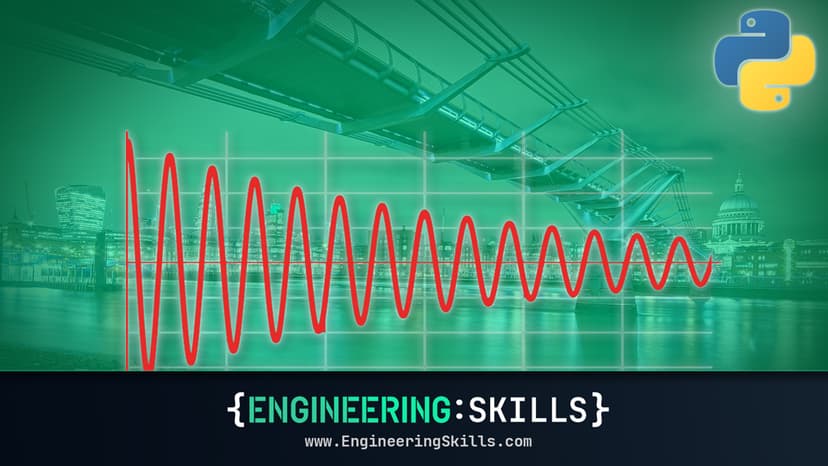- understand how to use the Duhamel Integral to calculate the dynamic response of SDoF systems
- be able to implement the solution using Python in a Jupyter Notebook
- understand how this numerical solution can be used to simulate the response due to quasi-random human-induced excitation
- be able to build a data visualisation to communicate the output of your simulation
In this Python mini-project, you’ll learn about the Duhamel Integral and how it can be used to simulate the dynamic response of a single degree of freedom system.
This project is divided into two parts:
-
In the first half of the project, we’ll learn about the Duhamel Integral and how it can be used to calculate the dynamic response of a single degree of freedom system. We’ll discuss how to solve the integral and then write some Python code to implement our solution for any arbitrary loading. This is particularly helpful if you want to simulate the response of a structure to non-periodic loading.
-
In the second half of the project, we’ll take what we've learned and use the Duhamel Integral to simulate the response of a footbridge to pedestrian traffic. This is a great example of how the Duhamel Integral can be used to simulate the response of a structure to quasi-random loading. This will essentially be a crowd loading simulation!
You don’t need to be a Python programmer to work through this project!
If you’re new to Python, don’t worry – you don’t need to be a Python programmer to complete this project! Complete beginners can work through this project and pick up the programming basics along the way. If you need help getting your coding environment setup, check out this lecture (part of another course but covers what you need to get up and running). So, with all of that out of the way, let’s get into it.


